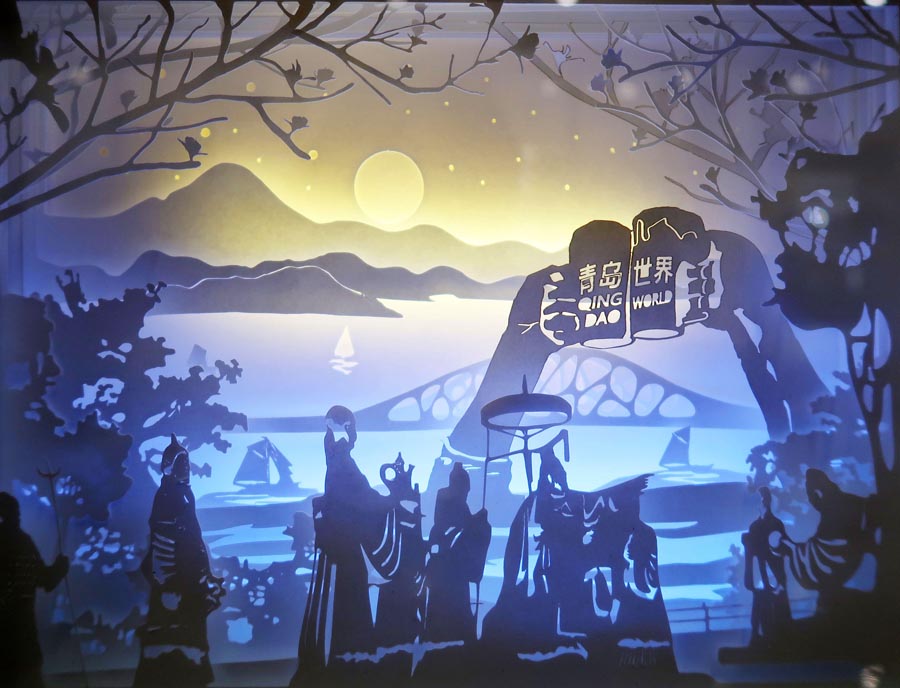 |
|
A piece of work by her team which was given as a gift to foreign guests of the Shanghai Cooperation Organization Qingdao summit in 2018. [Photo provided to China Daily] |
Imparting passion
Huang started to dabble in aesthetic education for children in 2002, when her team launched a summer camp to teach young people the culture of paper art, and encouraged them to not only draw inspiration from daily life for their artistic design, but also live in an artistic way.
The team has opened an aesthetic studio in Qingdao, aiming to do more of this type of work and to cultivate more aesthetic appreciation in children on the Chinese mainland.
Huang first came to the Chinese mainland in 1988, when cross-Straits direct transportation was realized and residents in Taiwan came to visit relatives and seek their roots.
"I read a beautiful piece of poetry about Qinghai Lake, the Yellow River and the Jinsha River when I was little, so I had been longing to see great landscapes on the mainland," Huang recalls. "When the plane finally flew over Shanghai and I saw the cityscape from the window, I was overwhelmed and shed tears."
Huang says that, when she visited the city in 2015, she liked Qingdao at first sight. The next year, she moved her studio to the city's West Coast New Area. She adds that she enjoys the warm winter and the summer breeze, and loves to take regular walks along the beach, which often ignites ideas and brings inspiration.
One of the team's major tasks is to teach younger generations how to learn about the world through paper art.
"Our team has tried to explore a simple way to enable young children to learn the basic skills of paper art," says Yao Chun, a member of Huang's team.
"We hope kids can easily get access to paper art. However, our goal does not only focus on craftsmanship," says Yao. "The manual work with paper is a way to lead children into different kinds of knowledge, such as science, technology, engineering, arts and math."
"More importantly, children can cultivate a healthy outlook on life, and a better understanding of the world, by themselves," adds Yao.
So far, more than 1,000 children have participated in their courses.